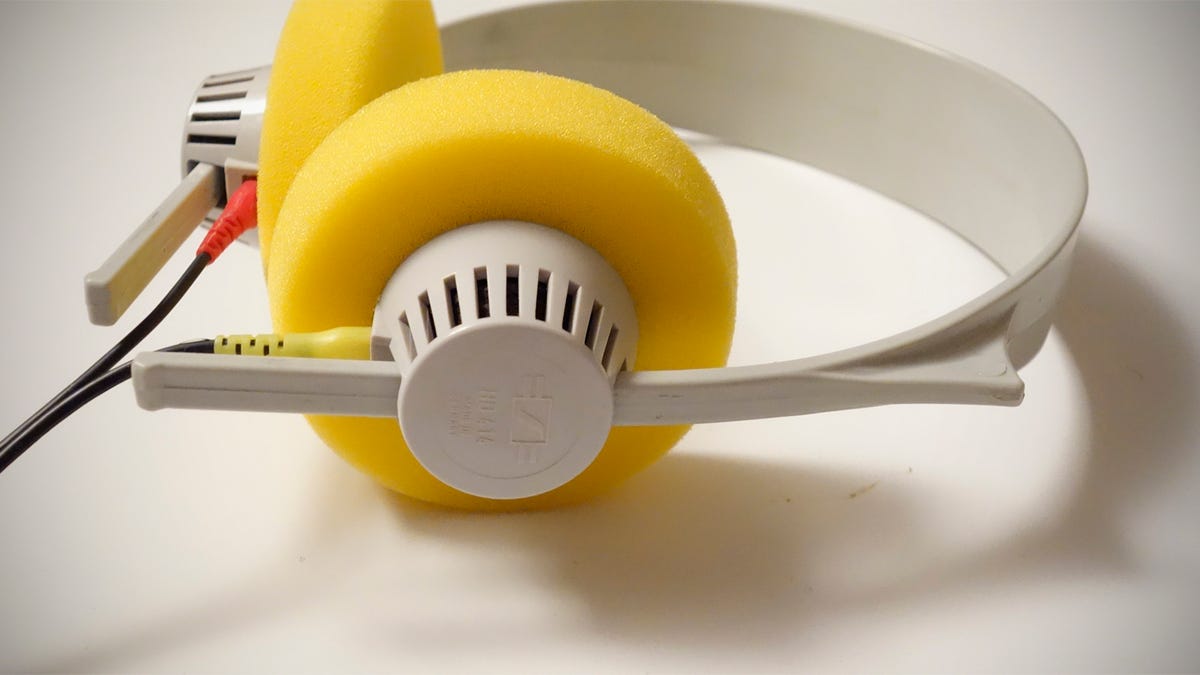Can Sennheiser's iconic headphone compete with today's models?
Sennheiser's HD 414 debuted almost 50 years ago and still sounds great!

When the Sennheiser HD 414 debuted in 1968, all other hi-fi headphones were big, heavy and painfully uncomfortable. Not only that, they were all closed-back designs, HD 414 was the world's first open-back design, Sennheiser dubbed it "Open Aire." The HD 414 looked, felt and sounded like nothing else, and it forecast the future direction of headphone sound.
The first generation models had a very high 2000-ohm impedance. A few years later, the HD 414 impedance came down to 600 ohms. In 1995 Sennheiser's 50th Anniversary Edition HD 414 was a 52-ohm model, suitable for use with portable music players. Fun fact: Sennheiser licensed "Open-Aire" technology to Sony for its first-generation Walkman headphones. Sennheiser ceased HD 414 production years ago and no longer manufacturers replacement drivers, but still stocks ear pads and cables.
I owned a HD 414 back in the day, but I have no idea where it is now. So a few months ago I bought an original HD 414 on eBay for $82. The seller provided new ear pads and the headphone was in excellent condition. He even included an original sales brochure and a letter he received from Sennheiser in 1972, answering some of his technical questions!
When I plugged in this ancient headphone I wasn't sure what to expect, would it match my memories, or sound completely out of date? The fit on my noggin was definitely snug, but no tighter than a pair of V-Moda XS headphones. As for the sound the HD 414 didn't disappoint.
Sennheiser sold more than 10,000,000 HD 414s, making it the bestselling full-size headphone of all time. Try one on and you'll know it's pretty special. Though it was designed as a consumer model, the HD 414 found favor with broadcast industry professionals. Incredibly enough, it weighs a mere 5 ounces (141 grams) -- contrast that with the 1970 Koss Pro4AA headphone that weighed a neck-straining 19 ounces (539 grams)!
Listening to a Legend
The HD 414 doesn't sound like a modern headphone, but it does have an exceptionally big and spacious sound, even compared with my Bowers & Wilkins P5 S2 on-ear headphones. The Drive-By Truckers' "American Band" album had tons more bass with the P5 S2 -- too much, in my opinion -- but there's no denying the HD 414's bass is lightweight.
Listening to Eric Bibb's new acoustic album "Migration Blues" the HD 414's tonal balance was easy on the ears. As I got into the music I forgot I was listening to a nearly 50-year-old design.
"Jethro Tull -- The String Quartets" by the band's frontman Ian Anderson sounded delicious. The strings had a beautiful balance of warmth and bite. Treble detail was soft and non-fatiguing. Switching over to a new Sennheiser Momentum 2.0 over-the-ear, closed-back headphone, the strings sound grew thinner and harder.
Vocals sounded more natural over the HD 414, but the tables turned again when I played electronica wizard Aphex Twin's "Syro" album: The Momentum 2.0's bass easily trumped the HD 414's. The new headphone also wins on clarity -- while the HD 414 projected a bigger, out of my head soundstage than the Momentum 2.0 could muster.
No doubt, much progress has been made in headphone design, but the old HD 414 held its own on a number of counts.
The Sennheiser HD 414 is long out of production, but for a headphone that debuted when Nixon was president, it still sounds awfully good. This proves once again that when you choose wisely, great audio can last practically forever!

